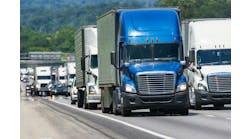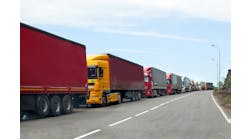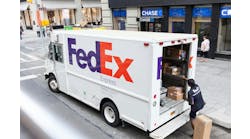On August 13, The U.S. Department of Transportation (DOT) announced that the Port of Oakland and the Northwest Seaport Alliance, which includes the Port of Seattle and Port of Tacoma, are now members of the Freight Logistics Optimization Works (FLOW) initiative, expanding the initiatives reach to the five largest container ports on the West Coast.
FLOW is a private-public partnership created and led by DOT that helps create a shared picture of the U.S. supply chain for members, which include the nation’s busiest container ports, major ocean carriers, and some of the largest retail importers.
How FLOW Works
Through the FLOW initiative, DOT collects, aggregates, and anonymizes key information shared by participants on inbound containerized freight, starting with importer purchase orders, and aligns future demand volumes against current regional capacity to move ocean containers. FLOW now includes over eighty members including the eight largest U.S. container ports, nine of the largest ocean carriers, and nine of the twenty largest retailers by imports, including over ninety companies in the onboarding process.
Industry members who join FLOW can access secure data through a shared online portal or API hosted by the Bureau of Transportation Statistics (BTS). DOT actively works with industry members to continue to improve and build use cases with FLOW data. Today, FLOW Members are working with USDOT to utilize FLOW data to better estimate port and inland network congestion. This includes using FLOW data to monitor cargo shifts resulting from Houthi attacks that have disrupted vessel traffic in the Red Sea.
Participants are using FLOW data as an input into existing company decision-making processes to better inform supply chain planning. These efforts work to smooth out supply chain volatility and support commercial needs.
“Our department has taken a number of aggressive steps to build more resilient supply chains through both historic infrastructure investments and unprecedented private-public partnerships, like FLOW, to better protect against shocks to the system,” said U.S. Transportation Secretary Pete Buttigieg, in a statement.
“This partnership will provide us with enhanced visibility of goods movement trends across the country and the added benefit of expanding and improving data sharing efforts throughout the supply chain,” said Port of Oakland Executive Director Danny Wan, in a statement.
The Port of Oakland and the Northwest Seaport Alliance join the Port of Los Angeles and the Port of Long Beach as FLOW members. Collectively, they comprise roughly 95% of West Coast inbound container volume. With all major West Coast ports now FLOW members, ocean carriers, shippers, truckers, and railroads will be able to better plan for and predict capacity needs to keep cargo moving and avoid bottlenecks.
In February 2021, President Biden ordered a whole-of-government approach to tackle supply chain disruptions brought on by the COVID-19 pandemic, and later launched the Supply Chain Disruptions Task Force and the Council on Supply Chain Resilience to strengthen our supply chains. The Administration’s steady efforts to improve supply chains in the short-, medium-, and long-term have lowered costs for consumers and lowered inflation across the economy—with supply chains accounting for more than 80% of the fall in inflation seen in 2023. Recently, FLOW was used to help mitigate supply chain disruptions during the nearly three-month Port of Baltimore closure.
Secretary Buttigieg has continued to bring together stakeholders from across the supply chain to address potential and ongoing disruptions. Last week, he convened two separate meetings with ocean carriers and shippers to ensure the Port of Baltimore’s container traffic returns to normal levels, address disruptions brought on by Houthi attacks in the Red Sea, and other supply chain challenges.



